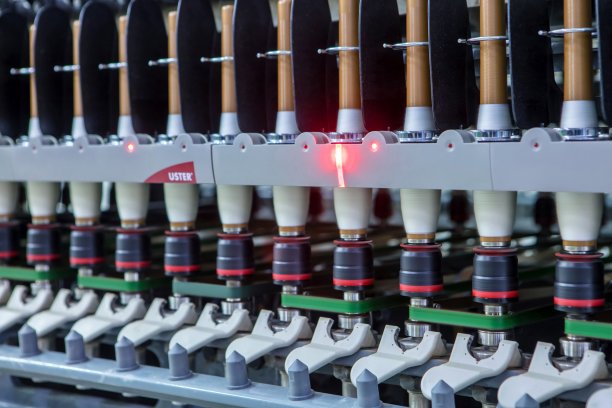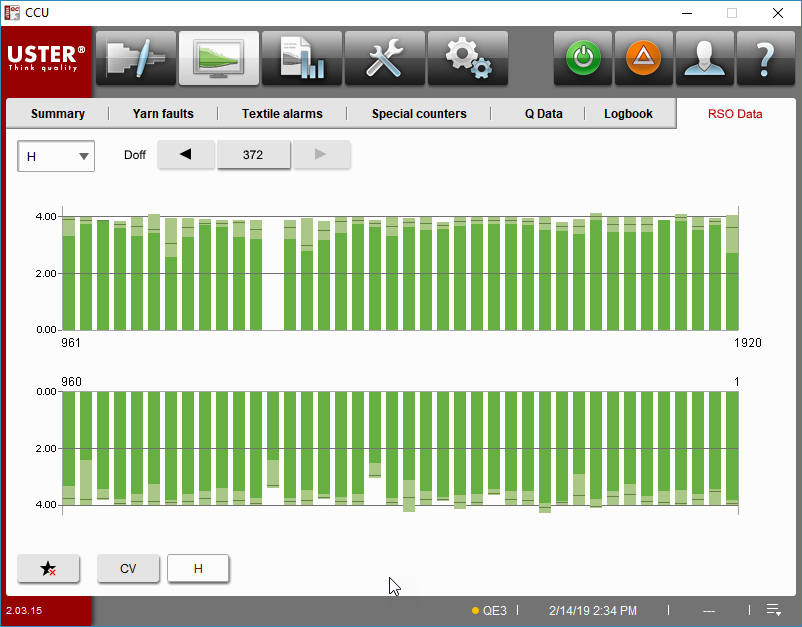
Uster appoints new Head of Textile Technology
Overall, the mill was able to reduce total yarn splices by 5%, producing about 5kg more good yarn per machine per month.

6th September 2021
Innovation in Textiles
|
Uster, Switzerland
With Uster’s RSO 3D, spinning mills can now intelligently correlate ring quality data and winding quality data in a single system, for significant profitability increases.
One Indian spinning mill has provided details of the concrete gains it is making after installing Uster-Muratec RSO 3D lines as part of an expansion project.
The installation included 30 compact ring spinning machines with Uster Sentinel, in combination with Muratec QPRO EX/FPRO EX featuring Spin Inspector and Uster Quantum yarn clearers.
The mill produces 100% combed cotton yarn, in counts Ne 26 and Ne 32 on these machines.
When the new installation was being started up, a direct comparison between RSO 3D and a standard installation was executed as a trial, in order to demonstrate the difference. It showed that the mill was able to reduce yarn faults by 10% and yarn alarms by 12% with RSO 3D in both counts. Quality blocks were reduced by a further 7% and clearer quality cuts by 8%.
Overall, the mill was able to reduce total yarn splices by 5%, producing about 5kg more good yarn per machine per month.
Savings
As a result, by reducing yarn joins on the winding machines, the Uster customer needed less compressed air and thus less electricity for the machine compressor unit. These savings together amount to approximately 954 kWh per machine per month. Calculated at about 0.08 USD per kWh, this comes to US$77 per machine per month. With 30 machines, this amounts to $27,720 for a full year.
On top of the financial savings, the mill also noted an increase in the level of ‘good’ material. The 5kg reduction in waste means that with 30 machines, 1,800kg of additional yarn is being produced per year. Based on a price of $3.77 per kg, this equates to an increase in sales worth another $6,786.
The overall gain is an annual $35,000 in addition to the significant savings due to reduced clearer cuts, and further advantages can also be expected in downstream processes.
Fewer cuts mean the yarn has fewer potential weak points, leading to less stoppages due to yarn breaks. This makes it possible to adapt subsequent process speeds, while the mill’s customers also benefit from an improved fabric appearance.
Problem solving
In an additional benefit, the working area for machine operators at the mill has been increased significantly because Uster Sentinel notifies the operators from a distance about individual yarn breaks. The system uses signal lamps at the head of the machine, at the relevant section, and at the affected spinning position. As a result, the operator is logically guided to the next yarn break, instead of having to laboriously search for yarn breaks along all machine sides.
When an operator locates a yarn break, the type of break is indicated at the spinning position. Different signals categorise the problem as either Slip, Off Quality, Rogue or RSO 3D alarm.

At the Indian mill, operators are instructed to deal exclusively with yarn breaks, but not with the RSO 3D alarms. These are the responsibility of highly-trained technicians, because they indicate a faulty setting at the spinning position, and repairing them is both necessary and time-consuming. The RSO 3D alarms are displayed to the technicians by the Sentinel LEDs, and also on the Quantum control unit (CCU), as well as on the RSO 3D Quality Map.
As a result, the customer can deploy trained personnel in a very targeted and efficient manner.
Rapid payback
Individual quality data for each spindle position enables quality mapping across the ring spinning machine. This helps to identify outlier sides, sections or spindles, in addition to supporting maintenance decisions. Quality mapping also enables users to trace problems back to the individual roving machine and bobbin.
“Our customer is convinced by the Uster RSO 3D because of the increased spinning productivity and profitability, as well being able to use trained personnel in a very targeted and efficient manner,” said Amol Kekre, general manager of sales and marketing at Uster’s subsidiary in India. “Bigger profits come with increased quality standards, because of much smoother running at the winders. Claims are a thing of the past and increased production efficiency is assured for the future. The spinner’s downstream customers will also be delighted to increase production speeds in their own processes – and to improve fabric appearance at the same time.”

Business intelligence for the fibre, textiles and apparel industries: technologies, innovations, markets, investments, trade policy, sourcing, strategy...
Find out more